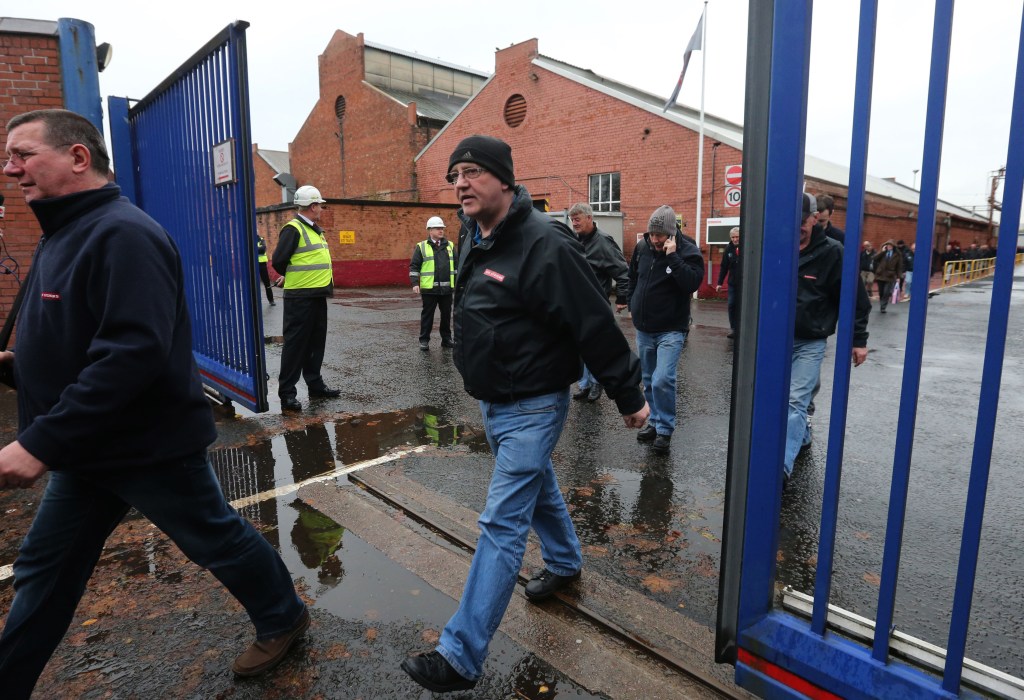LONDON — For five centuries, since the time of the Tudors, the shipyard in Portsmouth, England, built warships that helped Britain rule the waves and create an empire. On Wednesday, the yard’s workers learned the site will be shut.
BAE Systems, Britain’s largest military shipbuilder, announced a restructuring plan that will cut 1,775 jobs. Portsmouth, the home of the Royal Navy’s command, will be hit hardest and stop building military ships altogether. Shipyards Glasgow and Rosyth in Scotland will face fewer cuts.
The decision was all the more charged because Scotland, where all of Britain’s military shipbuilding will be concentrated, will vote next year on whether to become independent.
Portsmouth took the news hard. The move was a psychological blow to the seaside community which has long plied its fortunes beside the navy and alongside the water. Hundreds of high-paying, skilled jobs are not simple to replace, particularly in a time of economic troubles.
“We’re an island nation,” Gerald Vernon-Jackson, a local government leader in Portsmouth. “We depend on sea trade for the food we eat, for the fuel in our cars. If we don’t have a navy to make sure the sea lanes stay open, the country’s economy will collapse.”
Defense Secretary Philip Hammond, who broke the news of the cuts to Parliament, said there was no getting around the fact that times had changed. Shipbuilding is an increasingly competitive market, particularly in the military sector, where governments are cutting down on procurement costs.
It is simply a “fantasy” to think that Britain’s shipbuilders could experience a renaissance, he said.
The decision to close the Portsmouth yard also reflects the country’s fading connection to the sea. The rise of container ships concentrated in a few large ports has decreased the visibility of commerce by sea.
Robert Blyth, a senior curator at the National Maritime Museum in Greenwich, called it “sea blindness.”
“We’re a very urban population. The major ports have moved away from the major cities. The mass movement of goods that still goes on through shipping is somewhat invisible,” he said.
Even so, unlike factories, or call centers or other major employers, shipyard cuts are talked about for a generation, said Guy Anderson, an analyst for Jane’s Defence Industry.
He said the shipyards’ troubles stemmed from their inability to deal with the fitful nature of the market. Orders for warships provide plenty of work, but only in bursts, followed by long stretches of inactivity for the yards.
“Effectively, the sector is cyclical — often described as feast followed by famine,” he said. “The major challenge has always been keeping shipyard workers active — and skills alive— during periods when there are low orders or lower production rates.”
BAE won’t be leaving Portsmouth entirely, and will continue maintenance and radar system operations there.
Still, many bemoaned the loss of a dockyard that traces its history to King Henry VII. His son, Henry VIII, paid for the Tudor warship Mary Rose. Portsmouth built the HMS Dreadnought, a battleship used during World War I that was notable for its “all big gun” main battery. The city paid for being a naval center during World War II, when it was bombed heavily.
“Portsmouth is so linked to the navy,” Blyth said. “It does break a sort of long tradition.”
Send questions/comments to the editors.



Success. Please wait for the page to reload. If the page does not reload within 5 seconds, please refresh the page.
Enter your email and password to access comments.
Hi, to comment on stories you must . This profile is in addition to your subscription and website login.
Already have a commenting profile? .
Invalid username/password.
Please check your email to confirm and complete your registration.
Only subscribers are eligible to post comments. Please subscribe or login first for digital access. Here’s why.
Use the form below to reset your password. When you've submitted your account email, we will send an email with a reset code.